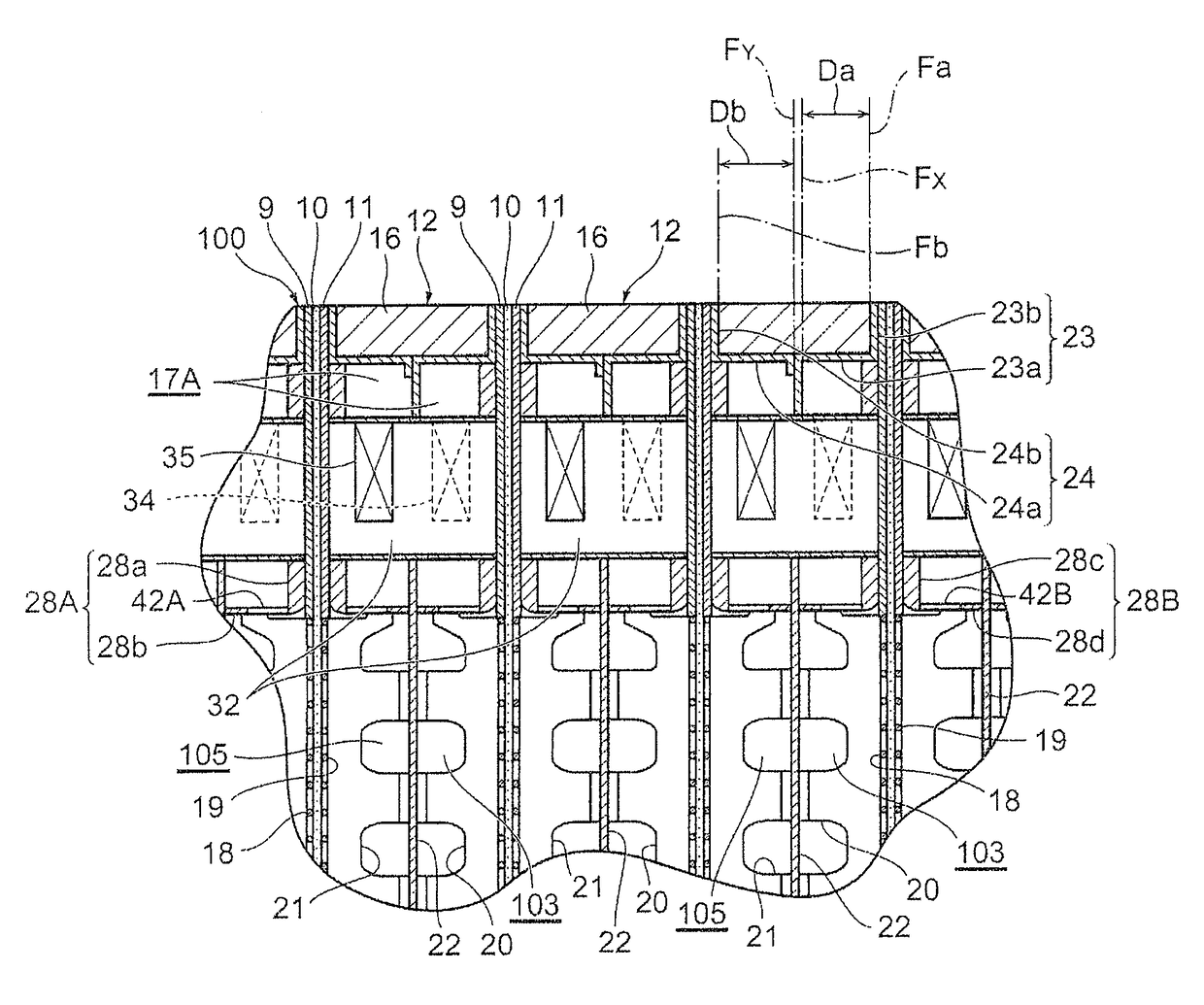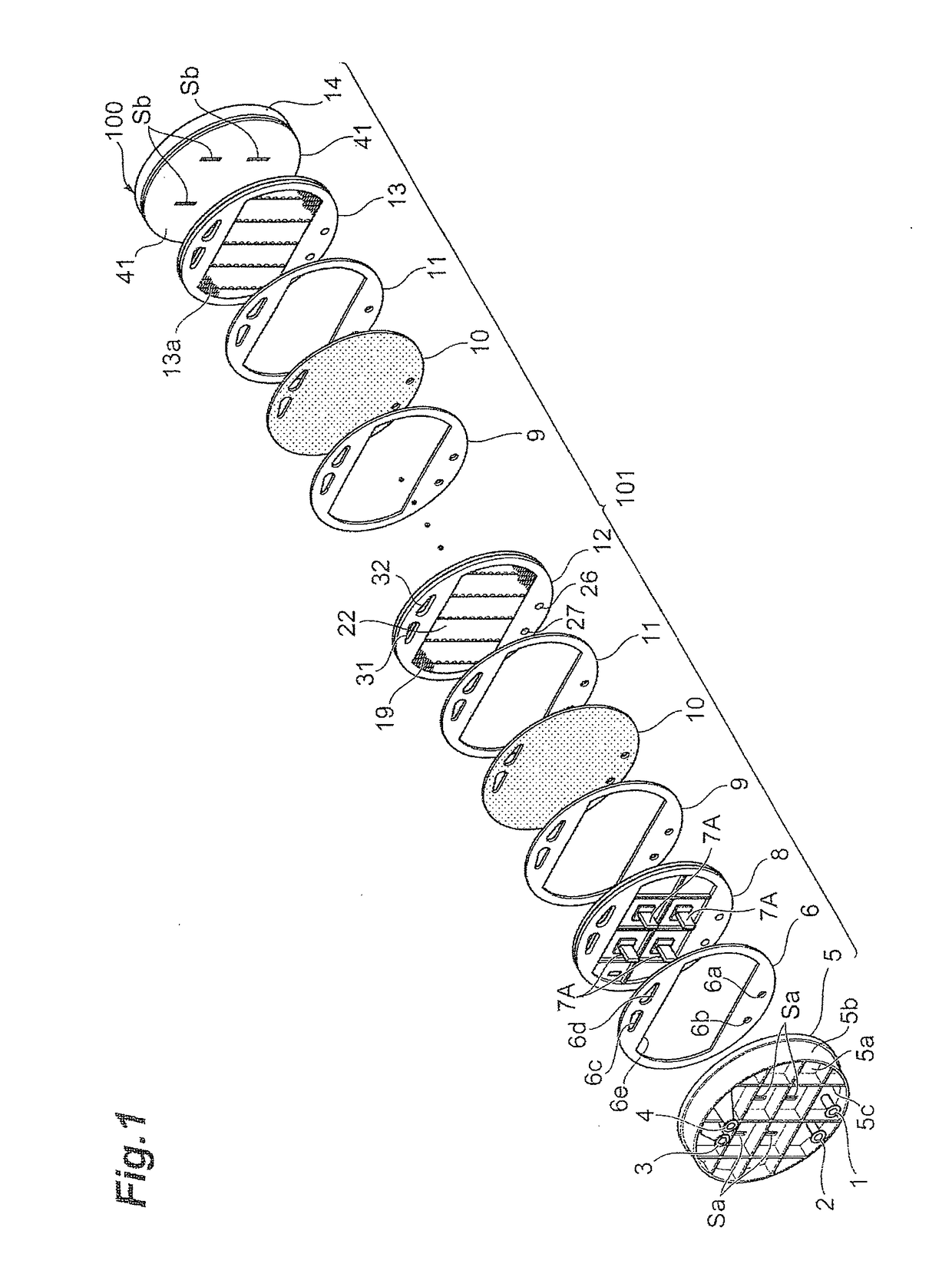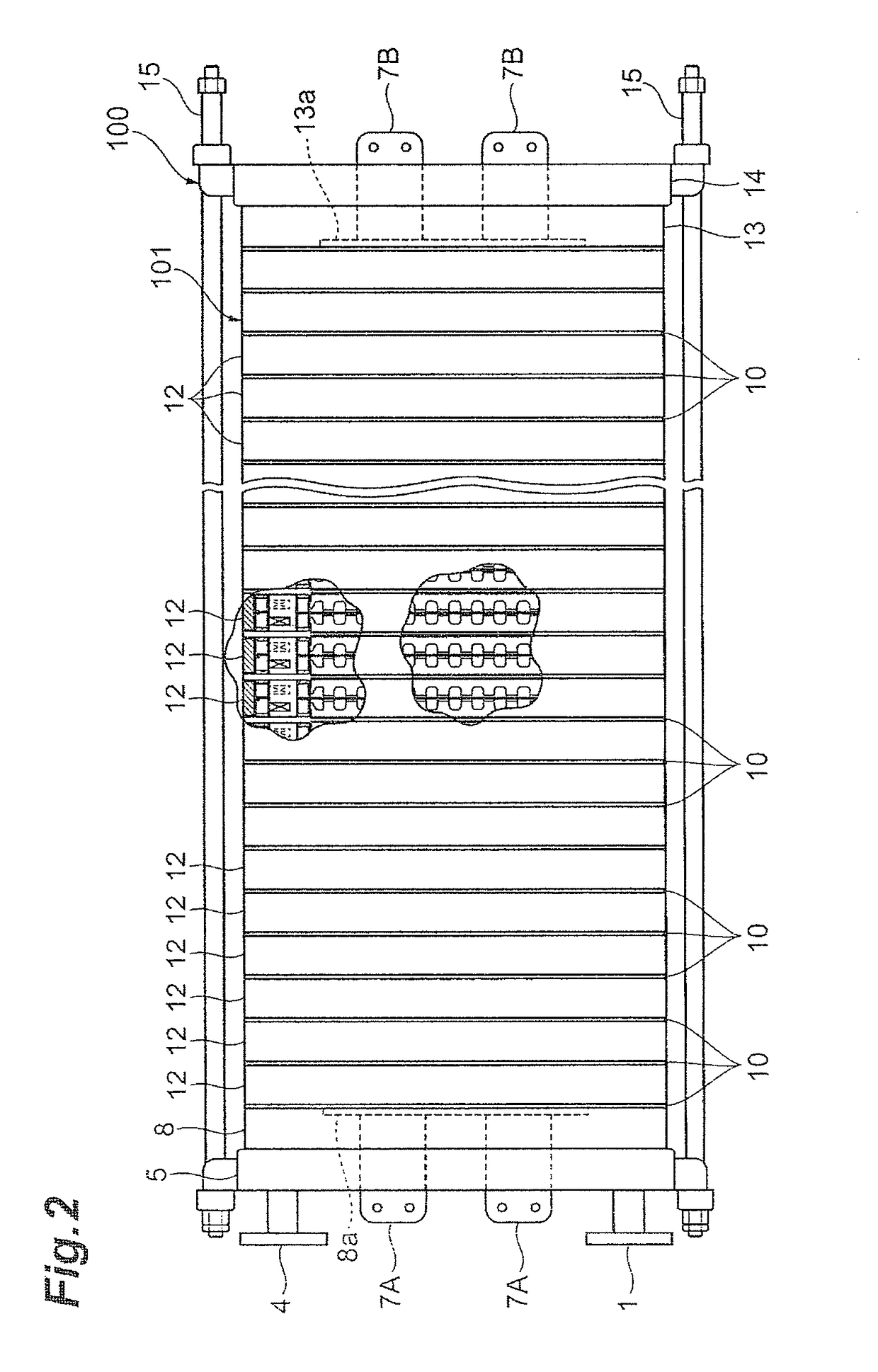Bipolar alkaline water electrolysis unit and electrolytic cell
a technology of bipolar alkaline water and electrolysis cell, which is applied in the direction of electrolysis components, electrolysis processes, electrolysis coatings, etc., can solve the problems of high energy consumption, inability to put to practical use, and difficulty in producing a large electrolysis cell, so as to achieve convenient assembly and maintain the effect of facility costs
- Summary
- Abstract
- Description
- Claims
- Application Information
AI Technical Summary
Benefits of technology
Problems solved by technology
Method used
Image
Examples
example 1
[0220]The present invention will be described below based on examples. However, the present invention is not limited to the examples.
[0221]Example 1
[0222]An electrolytic cell 100 similar to the one depicted in FIG. 2 was assembled by using three cells with electrolysis units 12 similar to those according to the first embodiment depicted in FIG. 3 and FIG. 4, and placing the press flange 5, the press flange gasket 6, and the anode terminal unit 8 at one end of the electrolytic cell, while arranging the end press flange 14 with the cathode terminal unit 13 and the insulating plate 41 attached thereto, at the other end, as depicted in FIG. 1.
[0223]The electrolysis unit 12 was shaped like a circle with an outer diameter of 700 mm, and the areas of the anode 18 and the cathode 19 were each 0.25 m2. Furthermore, the depth (anode chamber depth) of the anode chamber 103 was 15 mm, and the depth (cathode chamber depth) of the cathode chamber 105 was 15 mm. The materials for the anode side fl...
example 2
[0258](Production of the Electrode A)
[0259]100 wt % nickel oxide powder of particle size 0.2 to 2 μm, 2.25 wt % gum arabic, 0.7 wt % carboxyl methylcellulose, 0.001 wt % sodium lathyl sulfate, and 100 wt % water were mixed together and stirred to prepare a suspension. A granulated substance with a particle size of 5 to 50 μm was prepared from the suspension using a spray drying granulator.
[0260]The granulated substance was sprayed on the opposite surfaces of a conductive base material by plasma spraying. An electrode A with the conductive base material and a catalytic layer covering the conductive base material was obtained using the steps below. The catalytic layer provided in the electrode A corresponds to a precursor of each of the catalytic layers in electrodes B, C, D, E, F, and H described below.
[0261]As the conductive base material, a nickel expand base material previously subjected to blast processing was used. The thickness of the base material was 1 mm. In the plasma spray...
PUM
| Property | Measurement | Unit |
|---|---|---|
| thickness | aaaaa | aaaaa |
| distance | aaaaa | aaaaa |
| distance | aaaaa | aaaaa |
Abstract
Description
Claims
Application Information
 Login to View More
Login to View More - R&D
- Intellectual Property
- Life Sciences
- Materials
- Tech Scout
- Unparalleled Data Quality
- Higher Quality Content
- 60% Fewer Hallucinations
Browse by: Latest US Patents, China's latest patents, Technical Efficacy Thesaurus, Application Domain, Technology Topic, Popular Technical Reports.
© 2025 PatSnap. All rights reserved.Legal|Privacy policy|Modern Slavery Act Transparency Statement|Sitemap|About US| Contact US: help@patsnap.com



